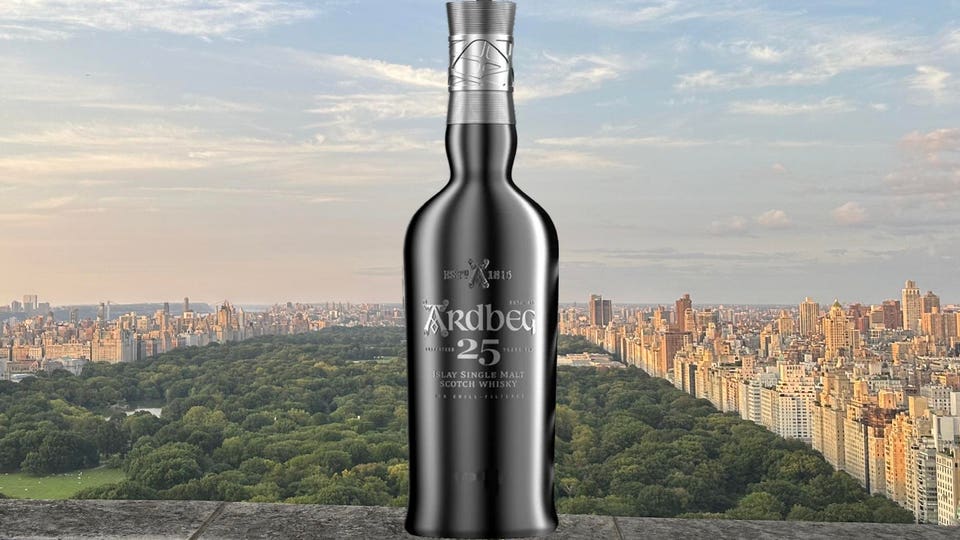The best scotch of 2023 as voted by the New York Wine and Spirits Competition
Photo Illustration: Brad JapheLast week we surprised a lot of whiskey enthusiasts by revealing that the New York World Spirits Competition had landed on a relatively obscure craft release as its “Best In Show Bourbon.” Now we’re back with more exclusive intel from the prestigious annual judging, this time related to scotch. The winner here is markedly less surprising: a top-shelf release from a revered producer, bearing significant statement of age.
As you can plainly see from the photo above, we’re talking about Ardbeg 25. Let’s take a closer look at this storied single malt from Islay to see what makes it so sensational. You don’t exactly have to examine Ardbeg hardware too closely to realize that 1815 is an important year in the brand’s history. Indeed, the year of the distillery’s founding is embossed prominently, right below the neck of each bottle. It hasn’t been smooth, uninterrupted sailing ever since, however. Production was shut off on-site several times over the ensuing centuries. The most recent closure occurred back in 1996, at which point the operation was largely left in disrepair.
If it weren’t for the foresight of the fine folks of Glenmorangie—under the lead of legendary malt maker Dr. Bill Lumsden—the world might never have rediscovered this great mark of liquid. They acquired Ardbeg in 1997 for a thrifty £7 million and revived full production there a year later.
Ardbeg positioned its identity in the 21st Century upon the success of a core 10-year-old offering. The bold nature of its underlying distillate—unapologetic in its delivery of sweet, smoky muck—meant that it didn’t have to spend too long in barrels in order to command respect. To wit, a bottle of Arbeg 10 has no problem selling at over $60 retail, even though many scotch fans might expect a little bit older of an age statement on the label in exchange for that tier of pricing.
Dr. Bill and company, for their part, have been patiently waiting for stock to come of age so that they could add a more impressive mark of maturation to that core range. The moment arrived in late 2020, with the announcement of Ardbeg 25. Sheesh, was it worth the wait; an exceptionally complex malt, striking an accord between bonfire and butterscotch.
While there’s clearly smoldering earth and sticky tar to ponder in the nose, the palate is all about citrus, burnt sugar, cream and fudge. You might even pick up a thread of licorice before all is said and done. Bottom line is that it’s a belter through and through. And the argument can certainly be made that this one is undervalued on shelves, where it normally retails for just under $1000 a bottle. Other prestige malts bearing comparable age statements—from the likes of The Dalmore and The Macallan, for example—are more than twice as costly.
It’s even more of a bargain when you consider that last year a mystery investor spent roughly $19 million on a single barrel of Ardbeg malt, distilled in 1975. It breaks down to approximately $127,000 per bottle of 47-year-old scotch (the oldest known stock in existence from the distillery). Far be it from us to tell you how to spend your money, but a $1000 bottle of Ardbeg 25 is perhaps a more sensible investment. The recognition received at the 2023 New York World Wine & Spirits Competition merely underscores this assertion. Next week we’ll reveal what they selected as the Best In Show whisky across all categories. See you then!
The storied Ardbeg warehouses along the rugged coast of Islay, Scotland
Brad Japhe

